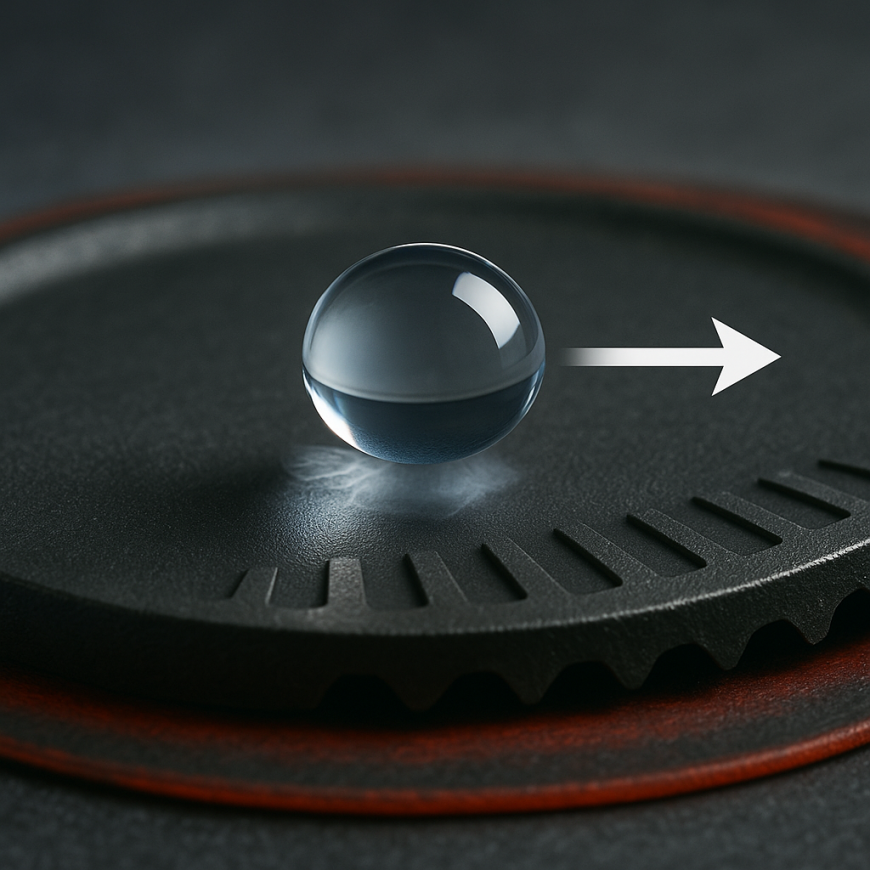Floating droplets
TU publication on the Leidenfrost effect
2025/04/28 by Fachgebiet Nano- und Mikrofluidik
Surprising discovery in microfluidics: Research team from Tsinghua University and TU Darmstadt shows that Leidenfrost droplets can also move in a targeted manner on symmetrical surfaces – a phenomenon that could enable new approaches to fluid transport on the smallest scale.

Many people are familiar with the so-called Leidenfrost effect from everyday kitchen life: a drop of water on the hot hob does not touch the surface, but is kept at a distance by a thin film of steam, which gives the drop a high degree of mobility. However, the movement of the droplet on the hotplate is undirected and erratic. About two decades ago, it was discovered that a Leidenfrost droplet moves in a directional and controlled manner on a surface with the structure of a ratchet, reaching speeds of ten centimeters per second or more. The reason is that the asymmetry of the ratchet ensures that the vapor underneath the droplet escapes in a preferred direction, which propels the droplet.
A team of scientists from Tsinghua University in Beijing and TU Darmstadt were surprised to observe a similar droplet movement on completely symmetrical surface structures, for example on metal surfaces with parallel grooves. A theoretical model developed at the TU's Department of Nano- and Microfluidics explains this effect: once set in motion, the liquid surface near the hot metal surface is asymmetrically deformed and thus ensures the permanent propulsion of the droplet. In this case, it is not the solid surface but the liquid surface that forms the ratchet. The results have now been published in the journal “Science Advances”.
In a more general context, this phenomenon is known as spontaneous symmetry breaking: An initially symmetric system dynamically evolves into a state where the symmetry is broken. The principle is so general that the findings from the experiments with Leidenfrost droplets could be used to develop new concepts for transporting liquids on the millimeter or micrometer scale.

